Last updated: April 23, 2024
Article
The Oasis Newsletter: Spring 2024

Science Symposium: Save the Date!
Save the date for our Fall science symposium: October 16 through noon October 17, 2024. Plans include two days of talks and activities focused on resource management, science communication, and data management. The tentative schedule includes:- October 16, morning: Keynote speaker and talks
- October 16, afternoon: Concurrent data management workshop and field trip or hike
- October 17, morning: Talks

Dani Niziolek, Great Basin Institute and Klamath Network.
Bat Web Article Published
Sofia Elizarraras, who primarily works on our bat monitoring project, also expressed interest in helping with science communication for the network. She has been assisting us with social media, and also recently wrote a web article about the Yuma myotis bat. Read Sofia's article to learn more about this type of bat, one of the numerous species monitored by MOJN — the threats it faces and the actions the NPS is taking to learn about and protect bats.

Desert Springs Data Package and Quality Control Summary Published
Recently, Jennifer Bailard (Physical Scientist), Mark Lehman (Data Manager), and Sarah Wright (Data Scientist), completed a data package publication for the MOJN Desert Springs protocol, covering the years 2016 through 2023. The data package contains discrete data collected at six MOJN parks: Castle Mountains National Monument, Death Valley National Park, Joshua Tree National Park, Lake Mead National Recreation Area, Mojave National Preserve, and Parashant National Monument. These data, available in a series of comma separated values (CVS) files, include water quantity and water quality measurements as well as site condition information such as dominant vegetation, invasive plants, disturbance, and wildlife evidence. Please visit this NPS Data Store reference to access the data.
To accompany this data package, Jennifer Bailard also published a data quality control (QC) report, which summarizes data quality evaluations of the discrete data; this report is also availabe in the NPS Data Store at this reference.
Staff Updates
Welcome
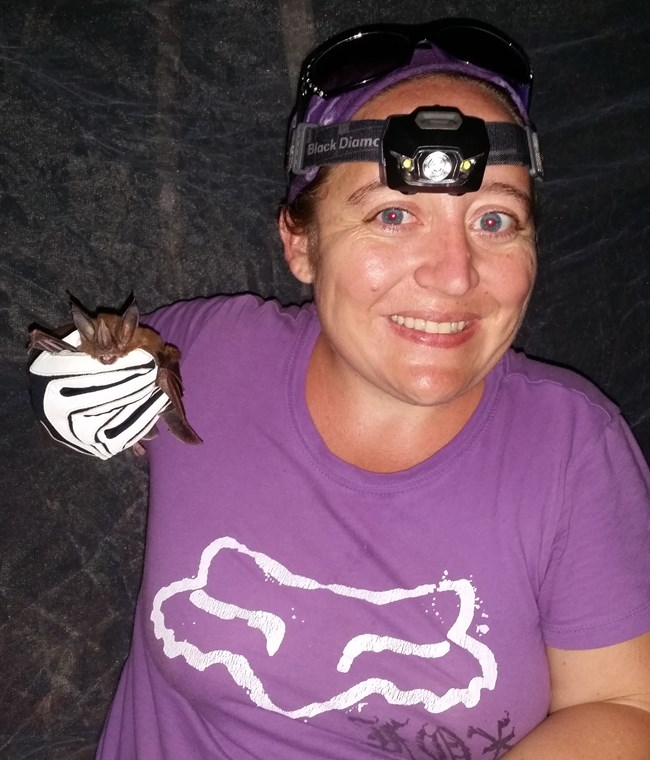
Ashleigh Green started working with MOJN in January as the Bat Monitoring Field Lead. She has worked on bat-related projects in 15 states and 3 countries, specializing in capture, telemetry, and acoustics. She loves being able to combine her love of technology, travel, and the outdoors through a variety of research, conservation, and education projects on bats. She appreciates experiencing the various habitats where they occur (everywhere except Antarctica!). Ashleigh has a BS in Range and Wildlife Management, BBA in Computer Information Systems, and a Certificate in GIS, through Texas A&M University, Kingsville. When she's not off chasing bats, she enjoys gaming (both tabletop and strategy PC games) and is an avid reader. She enjoys hiking, camping, and backpacking. Loving warm places of the world best, she enjoys exploring the Mojave Desert.
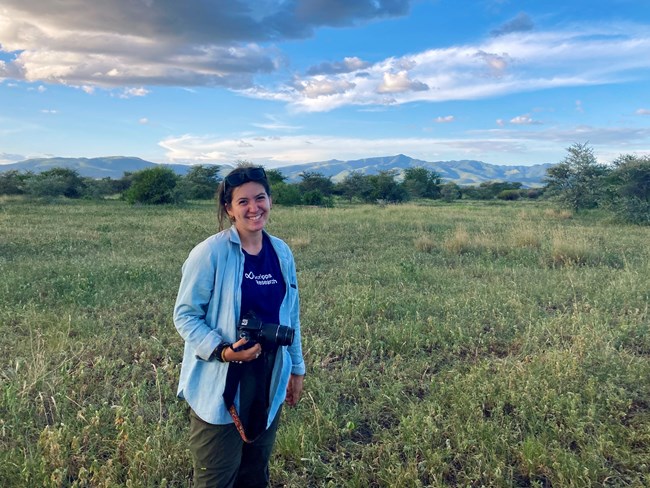
Sofia Elizarraras joined MOJN in January as an Ecology Assistant through the Scientists in Parks program. She works with our bat monitoring project deploying acoustic bat detectors and mist-netting bats to sample for white-nose syndrome. She is also assisting with science communication, especially social media posts. She has a degree in Biology from Kenyon College, and has a variety of field experience: mist netting birds in Ohio, conducting avian and amphibian surveys in Texas, trapping small mammals in Tanzania, monitoring bears and wolves in Alaska, and collecting nesting data for sea turtles in the U.S. Virgin Islands. In her free time, she enjoys traveling, dancing, hiking, and wildlife photography. See Sofia's article below about her first impressions during her first month with MOJN.

In late February, we welcomed four Conservation Legacy interns who will be assisting with our vegetation monitoring projects:
Adam Watson, who hails from Wisconsin with a B.S. in Biodiversity, Ecology, and Evolution, Saint Cloud State University, most recently spent two summers working for the U.S. Forest Service in central Idaho as a fisheries technician. He tells us that living and working in a desert environment is unlike anything he has experienced before. He is looking forward to learning about the native plant communities of the Mojave Desert and when not working, he enjoys backpacking, hiking, traveling, and fly fishing in our public lands.
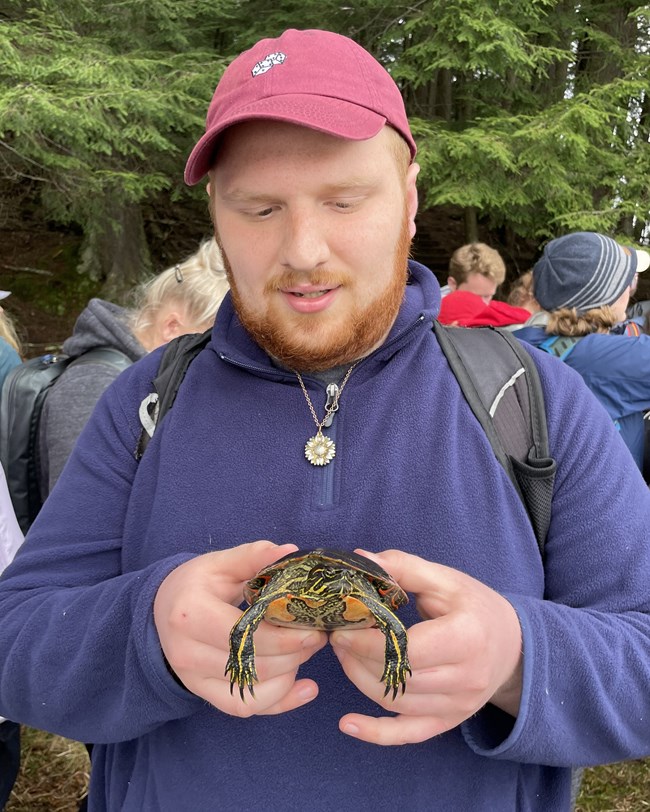
Alex Herzog, originally from Phoenix, recently graduated from University of Wisconsin-Madison where he studied wildlife ecology. His parallel interest in botany led him to work with the National Ecological Observatory Network in northern Wisconsin before finally landing back in the desert, working with the vegetation team at MOJN. When he's not outside looking for cool plants, birds, or herptiles, he enjoys reading fantasy books, playing PC games with friends, and lifting at the gym.
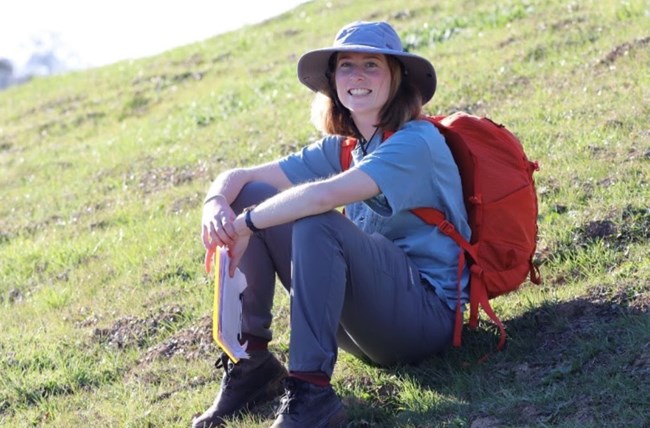
Athena Lynch grew up in California and has worked a variety of jobs in the west, most recently in a position monitoring and restoring wetlands and estuaries near Santa Cruz. While pursuing a B.S. in Environmental Science and Conservation Biology at UCLA, she discovered her love of desert ecosystems through field programs in the Mojave and Anza Borrego. She plans on exploring the nearby parks in her free time. When not working, she enjoys crafting, playing sports, and reading.
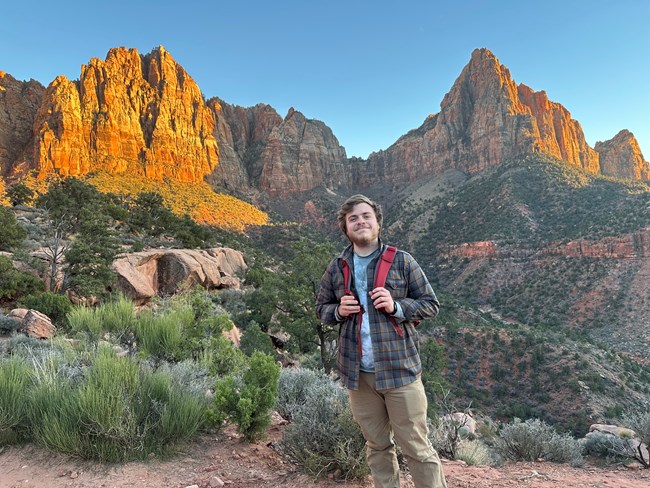
Ayden Kelly, who grew up in Florida and studied Ecology, Conservation and Evolution at the University of Central Florida, most recently joined us from the Cumberland Piedmont I&M Network (CUPN) where he was a forest vegetation monitoring intern. Having never lived ouside of the southeastern US, he is excited to learn about the ecology of the Mojave Desert and explore the American Southwest. He is particularly interested in landscape, fire, and soil ecology in forest ecosystems. When he is not hiking or traveling in his free time, he enjoys baking, playing board games, and Dungeons & Dragons.
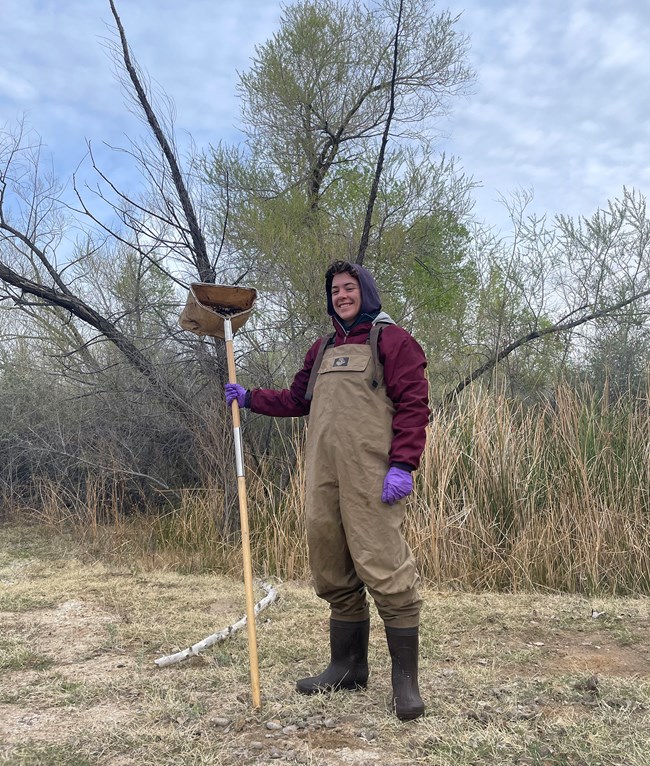
Farewell
Alison Gause worked the past 10 months as an Ecology Assistant with our vegetation and hydrology monitoring projects. We thank Alison for designing and developing a new logo for our network – check it out at the bottom of this newsletter! Alison's last day was April 6th, and they go next to Reno, NV, to work for the Bureau of Land Management (BLM) – read their good-bye article below.I will be heading up to the Reno area to work for Great Basin Institute as an ecological crew lead technician. I will be supporting the implementation of the BLM vegetation and soil Assessment, Inventory and Monitoring strategy in northern NV with the Nevada Statewide Project. Before MOJN I had not spend much time on this side of the country and I really enjoyed being able to explore the diverse selection of parks and landscapes through hiking at work and climbing in my free time. I appreciated the challenges and range of experiences field work brought me! With Veg I loved learning how to ID plants; I was delighted to recognize them as the season went on and I really enjoyed the pine protocol in Great Basin National Park. I will also miss all the board games, chess matches, and domino rounds! With the Hydo team, I was excited to take on more responsibility and learn all about the ecology of desert springs, in particular collecting macroinvertebrates and discerning how they are connected to an ecosystem's health. Seeing dozens of chunky toads at Pakoon Springs was definitely a highlight! I'm grateful for my time here; it was wonderful to get to know everyone at MOJN and I hope to see them around!
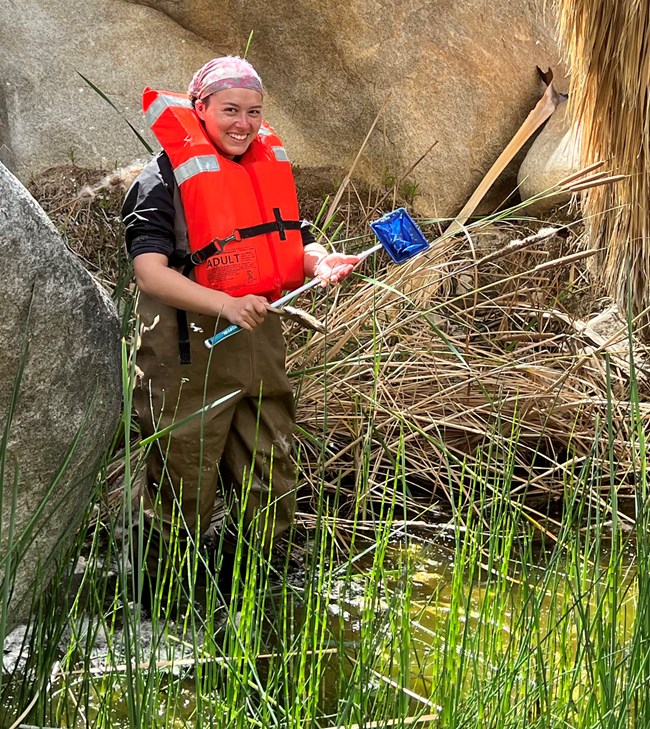
Avery Sigarroa worked as a Physical Science Technician with MOJN, via the Great Basin Institute. They assisted the network's hydrology team, monitoring desert springs and selected large springs. Avery's last day with MOJN is April 12th, and they will head to northern California for a U.S. Forest Service position. Learn more in Avery's good-bye article below!
My next seasonal position for this summer will be for the U.S. Forest Service as a Biological Science Technician. I will be the crew lead for a three-person Climate Adaptive Landscape Monitoring team. My crew and I are responsible for setting up plots to monitor the presence of vegetation, fuels, and wildlife throughout the Eldorado National Forest and specifically within the Mosquito Fire burn scar. We will get to travel to sites that were severely burned by the Mosquito fire and sites that were less burned, or even untouched, to understand how these sites are regenerating after the fire. I'm excited to be involved so I can develop better leadership and navigation skills in a backcountry setting and strengthen my plant identification skills in the Pacific Southwest Region.
I am so grateful to have spent my winter season with Mojave Desert Inventory & Monitoring Network. I've learned so much about desert hydrology and how water sources can develop and shift in an ecological system. I have a new understanding of the work that hydrologists do and why it's important in making resource management decisions. I feel proud that I've helped collect data for MOJN because nothing is more satisfying than a bulky collection of valuable data! I got to see so many beautiful places tucked away in the monuments and parks throughout the Mojave region that I otherwise wouldn't have experienced. I was also kept in-shape from all of the hiking and boulder scrambling that we did to reach the springs in the desert, which will truly benefit me this summer. The people at MOJN are a solid team and are doing amazing work to learn more about our desert systems and share their beauty and importance with the public.
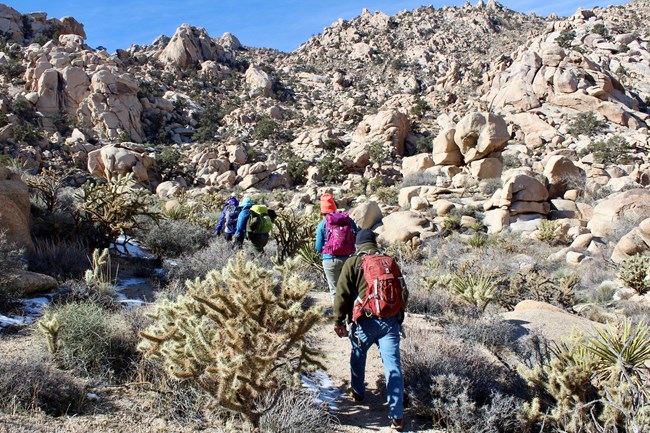
Photo by Sofia Elizarraras
Mojave First Impressions – Reflections from a Seasonal Technician
by Sofia Elizarraras
As a Scientists in Parks Ecology Assistant, my primary job within MOJN is to assist with the bat monitoring program—I deploy acoustic bat detectors across our parks and mist net bats to test for the presence of White Nose Syndrome!
As someone who loves working in different types of environments, the Mojave Desert had an obvious draw for me. There was something special that caught my attention in the job listing, despite never having worked in the desert previously. Maybe it was the potential to see tortoises and cholla cactus, or maybe, an overwhelming desire to be warm (I went to college in Ohio). Regardless, I’m thankful for whatever reason led me here, as I think this might be my best field season yet.
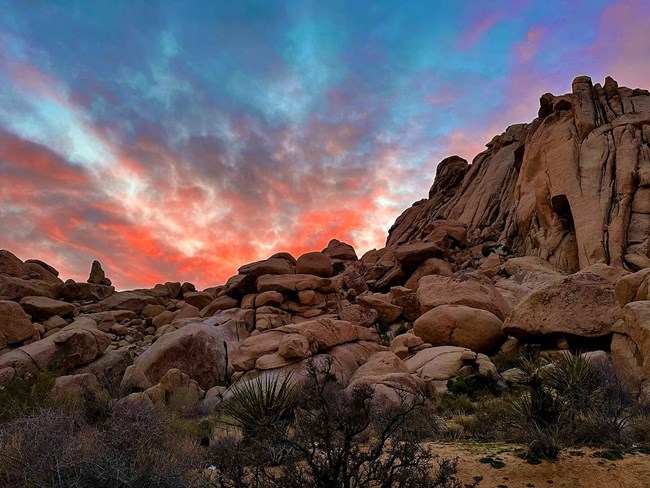
Photo by Sofia Elizarraras
At the time of my writing this, I’ve been here for just over a month. As soon as I unloaded my bags, we hit the ground running—I spent my first week with MOJN at a staff retreat at Mojave National Preserve, which was an amazing opportunity to meet the staff and get a sense of the team dynamic, as well as participate in informational presentations and activities. Since then, I’ve been in the field every week to deploy bat detectors at Joshua Tree, Mojave, Death Valley, and Lake Mead!
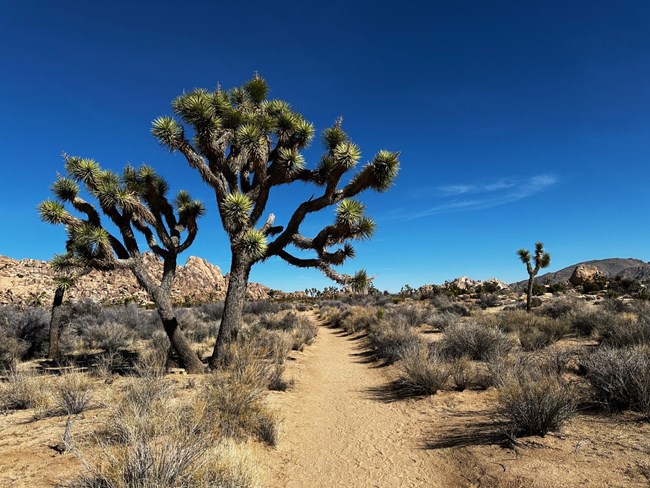
Photo by Sofia Elizarraras
The fieldwork hitches have been a fantastic opportunity for me to get driving tours of these southwestern parks, as well as get my feet on the ground and learn terrain, plant ID, and resident animals. It has been super neat to be able to hike as part of my work day and stay overnight at parks I’ve always wanted to visit! The highlights of my first month are the desert sunrises and sunsets (you can see the colors for miles in all directions), as well as the opportunity to talk with coworkers about their career journeys during long car rides. Everyone has been so welcoming and helpful; I have already learned so much in just one month and been encouraged to try new things nearly every day.
I’m so happy to have found myself in the Mojave for the next several months and am very excited to continue my work with MOJN. I can’t wait to see what the rest of the season brings!
Spring and Summer Field Schedule
| Park | April | May | June | July | August | September |
| DEVA | Bats2, Spring Vegetation | Bats1 | Bats1 | – | – | – |
| GRBA | – | Streams and Lakes | Bats1 | Bats1 | – | Streams and Lakes |
| JOTR | Bats2 | Bats1, Integrated Upland Vegetation | Integrated Upland Vegetation, Selected Large Springs | – | – | Selected Large Springs |
| LAKE | Integrated Upland Vegetation | Bats1 | Selected Large Springs, Bats1 | – | – | Selected Large Springs |
| MANZ | – | – | – | – | – | – |
| MOJA | Bats2 | Bats1 | Selected Large Springs | – | – | Selected Large Springs |
| PARA | Desert Springs | Bats1 | Selected Large Springs, Bats1 | – | Aspen | Selected Large Springs |
2Capture
Assisting MOJN Parks with Science and Research Content on Their Websites
Our communications staff has continued reaching out to MOJN parks, offering assistance with adding pages to their websites that feature science and research happening in their parks, including MOJN Inventory and Monitoring efforts. Collaborating with park staff, Lake Mead National Recreation Area now has an Inventory and Monitoring page! These are win-win efforts, with parks getting new science content on their sites and MOJN gaining increased visibility for the work we do in these parks.

Alison Gause
NPS Mojave Desert Inventory & Monitoring Network
601 Nevada Highway
Boulder City, Nevada 89005
